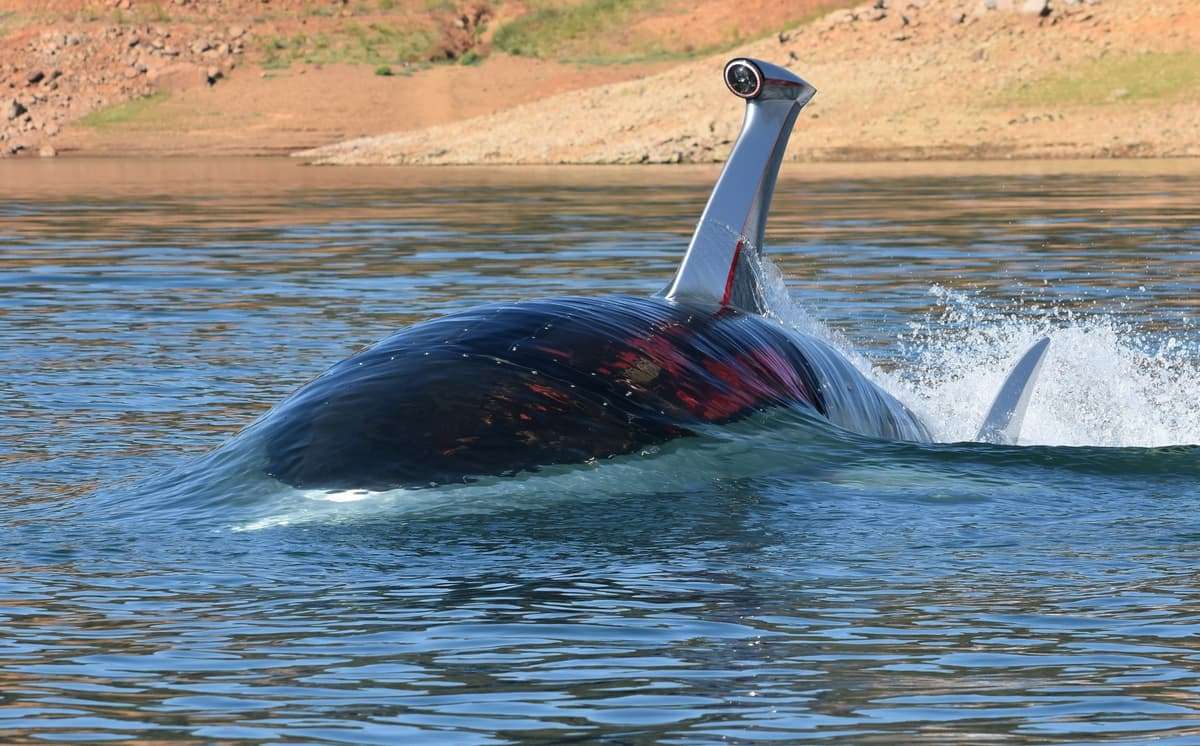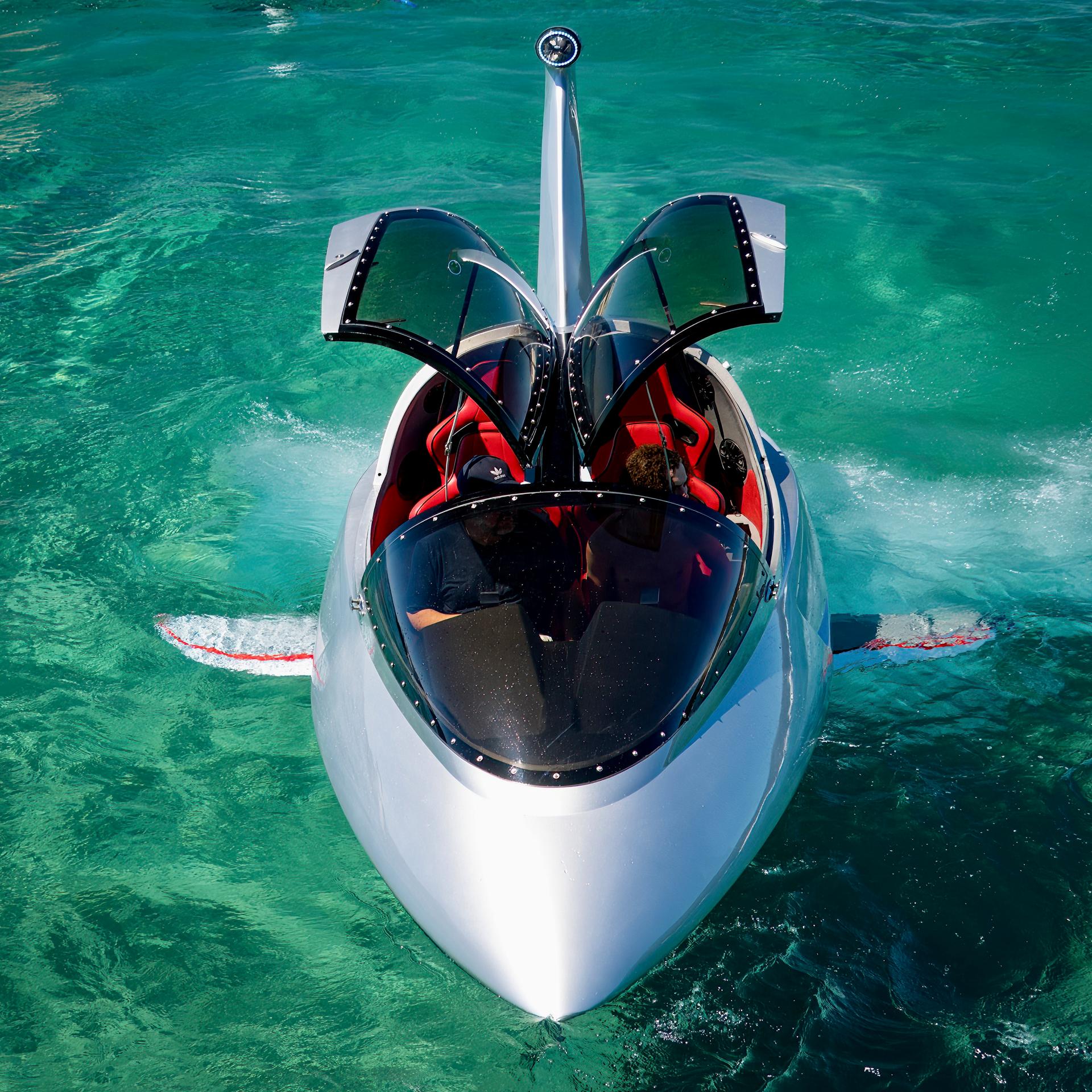If you like the idea of flying through the water like a dolphin, then the Seabreacher is the craft for you. However, what if you want to bring more than one friend along? Well, that’s where the Jet Shark comes in.

First of all, should you be unfamiliar with the Seabreacher …
It’s a dolphin/shark-inspired watercraft which both zips along the surface and shoots several feet underwater for a few seconds at a time before leaping back up into the air again. We actually tried the thing out for ourselves, 10 years ago. Then as now, its fighter-jet-like cockpit seated just one pilot and one passenger.
Its new sibling the Jet Shark addresses that limitation, as the initial 20-ft (6-m)-long Q model is capable of accommodating four adults in a watertight, climate-controlled cabin with large panoramic windows. Plans call for subsequent versions to seat up to six people.

Everyone enters and exits via gull-wing doors on either side, which can be left open on hot days if the craft is just staying at the surface. And because the touchscreen displays and other controls are duplicated on the left and right sides of the dashboard, either of the two front passengers can serve as the pilot.
The fully-functional jet-drive Q prototype is powered by a naturally-aspirated 420-hp Kodiak Marine engine, which is a marine version of the new-generation Corvette 6.2l V8 engine. Future models will offer 600-hp supercharged engines, or diesel engines for use by tourism companies.
Jet Shark company founder (and Seabreacher co-inventor) Rob Innes tells us that while the prototype has a top speed of 45 mph (72 km/h), the commercial version should top out at close to 55 mph (89 km/h).

But what about a quieter, more eco-friendly electric model? “Power Boats have unique inherent engineering challenges that make electric power plants more challenging,” he told us. “As electric marine power plants become more widely available we will definitely consider incorporating them.”
And yes, like its smaller sibling, the Jet Shark can shoot below the surface – to a maximum depth of about 5 feet (1.5 m). While it’s doing so, its engine “breathes” through a protruding topside snorkel fin – that fin also incorporates a camera, allowing the pilot to keep an eye on what’s going on above the surface.
Dives are initiated via a combination of electro-hydraulic-controlled dive planes (the equivalent of pectoral fins on its shark-like body), rear elevators, and a thrust vectoring system. And the Jet Shark is positively buoyant, meaning that it will float to the surface if its engine stops, or even if its cabin fills with water. It’s reportedly also self-righting, so it won’t stay upside-down if it flips.

The Jet Shark is currently still in its development phase and will require “a lot more testing and certification before it’s market ready” – that said, the company does plan on taking orders starting in early 2024. Buyers should expect to pay somewhere between US$250,000 and $300,000.
“This vessel was primarily designed based on the feedback we received from our 170-plus Seabreacher customers,” said Innes. “We want to offer them all the excitement of the very agile Seabreachers but in a more comfortable, practical, and reliable vessel. However it was still very important to me that we created a very slick, modern body design that didn’t resemble an underwater minivan.”
It can be seen in action, in the video below.
The Jet Shark
Company website: Jet Shark








